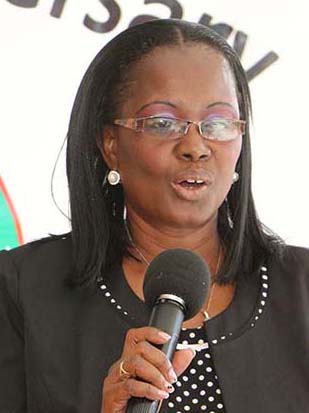During the year 2019, the National Insurance Scheme (NIS) spent significantly more than it earned, ending the year with a deficit of $1.503 billion.
The amount has been absorbed by National Insurance Fund, which stood at $31.731 billion.
According to the Scheme’s 2019 Annual Report, which was laid in the National Assembly on December 23, a total of $24.864 billion in revenue was collected by the Scheme for that year. Though this represented an 11.8% increase over the $22.238 billion earned in 2018, NIS still recorded a deficit as expenses incurred totaled $26.367 billion.
The report explained that contributions represented the bulk of revenue at $23.728 billion, with a contribution rate at just above 20%. This is above the 15% recommended by a 2011 actuarial review.
That review had predicted that the fund would be exhausted by 2021 unless a series of recommendations were implemented. These included: an increased contribution rate, increased wage ceiling to $200,000, and an increase in the age of eligibility for old-age pension from 60 to 65 years.
In 2019, the Scheme reports that there are 31,203 registered employers with 8,320 or 26.7% actively contributing. The total registered employees at December 31, 2019, was 741,417 with 168,847 or 22.8%, actively contributing, while 8,467 or 23.8% of 35,626 self-employed contributors were active.
General Manager of the Scheme, Holly Greaves, notes in the report that the insurable earnings ceiling was in 2019 raised to $256,800 per month due to an increase in minimum wage.
Also increased was the minimum rate payable for Old-Age and Invalidity Pensions. They moved to $30,000 and $32,100 respectively, while the rate of all other pensions above the minimum was increased by 2% effective from January 1, 2019.
The age of eligibility, however, remains the same.
Other areas of revenue include investments, which secured $0.98 billion for the Scheme in 2019. This, however, did not include earnings from the Berbice Bridge Company Inc (BBCI).
The value of the NIS investment portfolio at the end of 2019 was $27.450 billion. The returns, therefore, represented a mere 3.6% on the value of the investment. In 2018, a $0.95 billion return was 3.2% of the investment value.
The report explains that these returns are affected by the weak financial performance of BBCI in which NIS holds $500 million in Subordinated Loan Stock and $124.032 million in Preference Shares.
“No interest has been received from the preference shares since 2014 and for the subordinated loan stock a small portion of interest outstanding since 2015 has been received by the Scheme,” an attached audit from TSD Lal & Co notes.
The auditor explains that because of this, the capital portions are considered irrecoverable.
“No provision for expected credit losses were made for these investments… no income should be recognized on this investment since it is impaired,” they concluded.
While total income has increased by more than 11%, expenses have also increased by 7.8% to $23.887 billion.
According to the report, approximately $23.887 billion was paid out as benefits, while approximately $2.366 billion was expended on administrative expenses.
The majority of the benefits, 92.4% or $22.062 billion, were paid out from the Scheme’s long term branch for old-age pensions and grants, invalidity pensions and grants, survivors’ pensions and grants, and funeral grants.
A total of 38,175 old-age pensions at an average of $31,642 per month was paid throughout the year totaling $19.097 billion.
Short term benefits paid in 2019 totalled $1.589 billion or 6.6% of the total while the industrial benefits paid equaled $0.236 billion or 1%.









